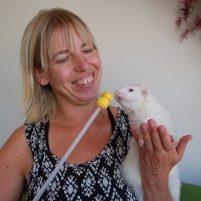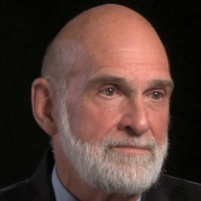|
Noble Aspirations |
| Sunday, September 29, 2019 |
| 8:00 AM–8:50 AM |
| Stockholm Waterfront Congress Centre, Level 4, A1 |
| Area: PCH; Domain: Theory |
| Instruction Level: Basic |
| CE Instructor: Peter Killeen, Ph.D. |
| Chair: Maria E. Malott (Association for Behavior Analysis International) |
| PETER KILLEEN (Arizona State University) |
 Dr. Peter Killeen is professor emeritus at Arizona State University. He has been a visiting scholar at the University of Texas, Cambridge University, and the Centre for Advanced Study, Oslo. He is a Fellow of the Society of Experimental Psychologists, a Senior Scientist Awardee from NIMH, a president of the Society for the Quantitative Analyses of Behavior (from which he received the Poetry in Science Award), held the APA’s F. J. McGuigan Lectureship on Understanding the Human Mind (!), and received the Ernest and Josephine Hilgard Award for the Best Theoretical Paper on hypnosis (!!). Dr. Killeen has made many innovative and fundamental contributions to the experimental and quantitative analysis of behavior. His major work includes the development of incentive theory, culminating in the mathematical principles of reinforcement (MPR; Behavioral and Brain Sciences, 1994), the behavioral theory of timing (BeT: Psychological Review, 1988), and a new theory of ADHD (Curr Dir Psyc Sci, 2016). He is the author of over 150 peer-reviewed papers, most of which have been cited; a few ignored; a couple cursed. He has served on the boards of editors of the Journal of the Experimental Analysis of Behavior, Behavioural Processes, Journal of Experimental Psychology: Animal Behavior Processes, Psychonomic Bulletin & Review, Psychological Review, Brain & Behavioral Functions, and Comparative Cognition & Behavior Reviews. Dr. Killeen's quantitative and conceptual developments have enriched behavior analysis and the world beyond. |
| Abstract: We shall hold this conference in a country that regularly celebrates noble achievements—recognizing them every year with Prizes to individuals in diverse fields who have “conferred the greatest benefit on mankind”. The first year’s laureates included William Röntgen, the discoverer of x-rays; Emil von Behring, developer of an anti-toxin for the deadly disease of diphtheria; and Henri Dunant, founder of the Red Cross Movement and Geneva Convention. None of the ensuing benefits would have materialized if each of these men had not had aspirations and focused their energies on achieving them. What are our aspirations, fellow behavior analysts? How do we marshal our energies? How do we make progress toward achieving them? Each of these laureates provide a model for different kinds of aspiration. Röntgen, the basic scientist, was studying very different phenomena when he made his life-saving discovery. von Behring, the applied scientist, was persistently focused on the problem of one deadly disease. Dunant, the social activist, had a vision of a world of nurturance, peace, and brotherhood. These kinds of themes are not only present in, but proclaimed by the Association for Behavior Analysis International, whose mission is to “contribute to the well-being of society” through basic, translational, and applied research, and practice. I shall draw out examples of such visions relevant to this audience, and shall ask the audience to help me formulate others. I shall describe behaviors that will help to nurture them. It is my goal in this opening lecture that you all leave here with one or more well-articulated aspirations, or the seeds of them; aspirations that prime your attention to the information and interactions in this conference, where you may continue to develop them, and carry them back in your workplace to inform your life’s work. |
| Target Audience: All conference attendees. |
| Learning Objectives: At the conclusion of the presentation, participants will be able to: (1) identify various goals of relevance to behavior analysis; (2) formulate aspirational goals for yourself; (3) describe techniques for making steady progress toward them; (4) explain ways to deal with seemingly irremediable obstacles to them; (5) design an environment that supports your aspirations. |
|
| |
| |
|
Cooperative Animal Care Using Response Contingent Stimulus Presentation |
| Sunday, September 29, 2019 |
| 9:00 AM–9:50 AM |
| Stockholm Waterfront Congress Centre, Level 4, A1 |
| Area: AAB; Domain: Applied Research |
| Instruction Level: Intermediate |
| CE Instructor: Eva Bertilsson, M.A. |
| Chair: Dag Strömberg (Autism Center for Young Children, Stockholm) |
| EVA BERTILSSON (Carpe Momentum) |
 Eva Bertilsson has a master’s degree in behavior analysis and a passion for all things related to behavior, learning and animal welfare. Together with business partner Emelie Johnson Vegh, Eva runs their collaboration Carpe Momentum, teaching seminars on the general principles of behavior and learning, and coaching trainers in the art of structuring great training sessions regardless of the venue or the species. Eva is a board member of the Swedish Association for Behavior Analysis, a faculty member of Clicker Expo, and an enthusiastic disseminator of ethical practices based in behavioral science. In addition to her own teaching, she has also been instrumental in introducing TAGteach™ and Fear Free to the Scandinavian audience. |
| Abstract: Animal welfare is a growing concern in our society, and the principles and procedures from applied behavior analysis are widely used by animal caretakers in their effort to deliver the best possible care. Service providers in the animal care sector are continually evolving their procedures and protocols, with a growing focus on enhancing the non-human individual’s control over its situation. We cannot gain informed consent in its true sense from our animal participants, but we can strive in that direction. Strategies using response contingent stimulus presentation (sometimes referred to as “start button behaviors”) are one example of this effort, allowing the animal to direct the pace and progress of the procedure. This presentation provides variety of examples where response contingent stimulus presentation has been used in settings as diverse as service dog training, noise desensitization and cooperative veterinary care. Training protocols are described, and foundations are provided for further reflections and scientific inquiries. |
| Target Audience: Practitioners working with individuals in a dependent situation (both humans and non-humans). |
| Learning Objectives: At the conclusion of the presentation, participants will be able to: (1) describe examples where “start button behaviors” have been used; (2) discuss how similar protocols can be applied in other contexts; (3) compare different possible protocols for introducing stimuli. |
|
| |
| |
|
From Basic Research to Large-Scale Dissemination of a Behaviorally Oriented Reading Curriculum |
| Sunday, September 29, 2019 |
| 10:30 AM–11:20 AM |
| Stockholm Waterfront Congress Centre, Level 4, A1 |
| Area: DEV; Domain: Basic Research |
| Instruction Level: Intermediate |
| CE Instructor: Deisy De Souza, Ph.D. |
| Chair: Martha Costa Hubner (University of São Paulo) |
| DEISY DE SOUZA (Universidade Federal de São Carlos) |
 Deisy de Souza is a Professor in the Department of Psychology at Universidade Federal de São Carlos (UFSCar), Brazil. She obtained her Ph.D. in Experimental Psychology at University of São Paulo (USP, 1981), and she completed a post-doctoral fellowship at the University of Maryland Baltimore County (1984-1985), at Charlie Catania's lab. She has conducted research on basic behavioral processes such as choice behavior, avoidance of aversive events, and stimulus control, and participated in pioneering studies applying the stimulus equivalence paradigm to investigate the acquisition of symbolic functions by auditory stimuli in users of cochlear implants. Over the past 30 years de Souza has also participated in the efforts of a research team investigating the acquisition of symbolic relations, developing equivalence-based instruction (EBI) to teach reading and writing skills, and disseminating computerized individualized teaching programs for individuals that benefit little from regular schools (children with protracted histories of school failure, children with intellectual disabilities, illiterate adults, etc.). The use of these programs by public schools gradually grew in scale, reaching progressively larger samples of learners. She is a Fellow of ABAI and a member of the Editorial Board of JEAB. |
| Abstract: This presentation will focus on the results of the joint efforts of a research team in developing instructional procedures, derived from behaviorally oriented basic research, for teaching rudimentary reading and writing skills. Curriculum development was based on the concepts of verbal operants (B. F. Skinner), on the stimulus equivalence paradigm (Murray Sidman), and on the principles of the Personalized System of Instruction (Fred Keller). The procedures and contents were organized in a comprehensive curriculum, currently available online for use in school and therapeutic settings. The research program to validate the curriculum involved basic science to elucidate key, behavioral processes; translational science to study these processes under controlled laboratory conditions; and applied studies in the classroom to verify whether the findings of the translational program would be sustained in less controlled conditions. The delivery of the curriculum through public schools gradually grew in scale, reaching progressively larger samples of learners. Current investigations focus on the logistics to transfer the management of the teaching tools to the school system. |
| Target Audience: Board certified behavior analysts; graduate students; licensed psychologists. |
| Learning Objectives: At the conclusion of this presentation, participants will be able to: (1) describe the main behavioral principles that guided the construction of the curriculum to teach reading; (2) point a route for the integration of reading and writing repertoires; (3) accurately describe instructional strategies used to establish arbitrary relations between spoken words, printed words and pictures; (4) explain the role of equivalence classes on the emergence of derived discriminated operants such as tact, textual behavior, transcription, and on reading comprehension. |
|
| |
| |
|
Learning Solutions: Improving Zoo-Animal Welfare With ABA |
| Sunday, September 29, 2019 |
| 11:30 AM–12:20 PM |
| Stockholm Waterfront Congress Centre, Level 4, A1 |
| Area: AAB; Domain: Service Delivery |
| Instruction Level: Basic |
| CE Instructor: Susan Friedman, Ph.D. |
| Chair: Dag Strömberg (Autism Center for Young Children, Stockholm) |
| SUSAN FRIEDMAN (Utah State University) |
 Dr. Susan Friedman is a psychology professor at Utah State University who has pioneered the application of Applied Behavior Analysis (ABA) to captive and companion animals. ABA, with its roots in human learning, offers a scientifically sound teaching technology and ethical standard that can improve the lives of all learners. Students from 22 different countries have participated in Susan's online courses, Living and Learning with Animals for Professionals and Living and Learning with Parrots for Caregivers. She has written chapters on learning and behavior for three veterinary texts (Behavior of Exotic Pets, Clinical Avian Medicine, and Manual of Parrot Behavior), and is a frequent contributor to popular magazines. Her articles appear around the world in eleven languages. Susan has presented seminars for a wide variety of professional organizations around the world such as the Association of Avian Veterinarians, the European Association of Zoos and Aquaria, Moorpark College Exotic Animal Training and Management program, and NASA’s Goddard Space Flight Center. She has been nominated for the Media Award given by the International Association of Behavior Analysis for her efforts to disseminate to pet owners, veterinarians, animal trainers and zookeepers the essential tools they need to empower and enrich the lives of the animals in their care. Dr. Susan Friedman is a psychology professor at Utah State University who has pioneered the application of Applied Behavior Analysis (ABA) to captive and companion animals. ABA, with its roots in human learning, offers a scientifically sound teaching technology and ethical standard that can improve the lives of all learners. Students from 22 different countries have participated in Susan's online courses, Living and Learning with Animals for Professionals and Living and Learning with Parrots for Caregivers. She has written chapters on learning and behavior for three veterinary texts (Behavior of Exotic Pets, Clinical Avian Medicine, and Manual of Parrot Behavior), and is a frequent contributor to popular magazines. Her articles appear around the world in eleven languages. Susan has presented seminars for a wide variety of professional organizations around the world such as the Association of Avian Veterinarians, the European Association of Zoos and Aquaria, Moorpark College Exotic Animal Training and Management program, and NASA’s Goddard Space Flight Center. She has been nominated for the Media Award given by the International Association of Behavior Analysis for her efforts to disseminate to pet owners, veterinarians, animal trainers and zookeepers the essential tools they need to empower and enrich the lives of the animals in their care. |
| Abstract: ABA principles, procedures and ethical standards are directly relevant to improving the welfare of zoo animals. A basic internet course was developed to improve ABA knowledge and skills of zoo keepers, veterinarians, and other animal professionals. In this presentation, the course and three case-studies of ABA interventions implemented by zoo keepers, will be briefly described: reducing self-injury with an elephant, increasing time in the visitor viewing area with a rhinoceros, and replacing rough handling of a baby orangutan by a surrogate orangutan mother. |
| Target Audience: Applied behavior analysts interested in the application of basic principles and procedures to the zoo setting. |
| Learning Objectives: At the conclusion of the presentation, participants will be able to: (1) define the term “least-intrusive” according to Carter and Wheeler (2005); (2) explain the relevance of the “least intrusive” guidline to selecting behavior-change procedures in the zoo setting; (3) describe at least two programmatic safeguards that can be put in place when using negative reinforcement in animal training; (4) describe two or more obstacles to achieving sufficient experimental control collecting intervention data at the zoo. |
|
| |
| |
|
| An Updated Version of Relational Frame Theory and How it Connects More Directly With the Concerns of Applied Behavior Analysis |
| Sunday, September 29, 2019 |
| 2:00 PM–2:50 PM |
| Stockholm Waterfront Congress Centre, Level 4, A1 |
| Area: CBM; Domain: Applied Research |
| Instruction Level: Intermediate |
| CE Instructor: Dermot Barnes-Holmes, Ph.D. |
| Chair: Per Holth (OsloMet -- Oslo Metropolitan University) |
| DERMOT BARNES-HOLMES (Ghent University) |
 Dr. Dermot Barnes-Holmes graduated from the University of Ulster in 1985 with a B.Sc. in Psychology and in 1990 with a D.Phil. in behavior analysis. His first tenured position was in the Department of Applied Psychology at University College Cork, where he founded and led the Behavior Analysis and Cognitive Science unit. In 1999 he accepted the foundation professorship in psychology and head-of-department position at the National University of Ireland Maynooth. In 2015 he accepted a life-time senior professorship at Ghent University in Belgium. Dr. Barnes-Holmes is known internationally for the analysis of human language and cognition through the development of Relational Frame Theory with Steven C. Hayes, and its application in various psychological settings. He was the world's most prolific author in the experimental analysis of human behavior between the years 1980 and 1999. He was awarded the Don Hake Translational Research Award in 2012 by the American Psychological Association, is a past president and fellow of the Association for Contextual Behavioral Science, is a recipient of the Quad-L Lecture Award from the University of New Mexico and most recently became an Odysseus laureate of the Flemish Science Foundation and a fellow of the Association for Behavior Analysis International. |
| Abstract: The seminal research on equivalence relations by Sidman (1994) and colleagues, which commenced in the early 1970s, led in the mid-1980s to the development of relational frame theory (RFT; Hayes, Barnes-Holmes, & Roche, 2001). In principle, the theory aimed to provide a modern behavior-analytic account of human language and cognition, but it had a relatively limited impact on language teaching and training programs within applied behavior analysis. Although there are likely many reasons for this lack of impact, I will argue that one of the primary problems was the absence of a readily accessible systematic framework for presenting the key elements of the theory itself. Recently, however, a systematic framework has begun to evolve, which is playing a key role in up-dating RFT. Critically, this framework appears to have the potential to connect the theory more directly to the concerns of applied behavior analysts who are focused on improving the language and cognitive abilities of their client populations. This new systematization of RFT is known as the hyper-dimensional multi-level (HDML) framework. The key elements of the HDML, for the purposes of language/cognitive training, involve 20 intersections between five levels of relational development (mutual entailing; relational framing; relational networking; relating relations; and relating relational networks), which vary along four contextual dimensions (coherence; complexity; derivation; and flexibility). The lecture will describe the HDML framework as a type of ‘periodic table’ for conceptualizing language/cognitive deficits and how to approach their remediation. Relevant concrete examples of recent uses of the HDML in this regard will be provided. |
| Target Audience: Applied behavior analysts with an interest in human language and cognition. |
| Learning Objectives: At the conclusion of the presentation, participants will be able to: (1) describe the basic units of analysis of RFT as presented in the seminal volume (Hayes, et al., 2001); (2) identify and explain the basic concepts presented in a graphical representation of the HDML framework; (3) provide examples of how the HDML framework may be used to support research and practice in applied behavior analysis in the domains of human language and cognition. |
|
| |
| |
|
How Children Develop Naming and How This Development Sets Life’s Prognosis |
| Sunday, September 29, 2019 |
| 3:00 PM–3:50 PM |
| Stockholm Waterfront Congress Centre, Level 4, A1 |
| Area: VBC; Domain: Applied Research |
| Instruction Level: Intermediate |
| CE Instructor: R. Greer, Ph.D. |
| Chair: Peter R. Killeen (Arizona State University) |
| R. GREER (Columbia University Teachers College and Graduate School of Arts and Sciences) |
 Greer is Professor of Psychology and Education at the Graduate School of Arts and Sciences and Teachers College of Columbia University where he directs the MA and Ph.D. programs in education as behavior science. He has served on the editorial boards of 10 journals, published over 200 research and theoretical articles in more than 20 journals and is the author of 14 books in behavior analysis. Two of his most recent books are translated into Korean, Spanish, and Italian. Greer has sponsored 236 doctoral dissertations, taught over 2,000 teachers and psychologists, originated the CABASÒ model of schooling used in the USA, Ireland, Italy, England, founded the Fred S. Keller School, and established general education classroom models for elementary and preschool education in public education based entirely on behavior science (www.cabasschools.org). He has done basic and applied experimental research in schools with students, teachers, parents, and supervisors as well as pediatric patients in medical settings. He and his colleagues and students have identified controlling stimuli for verbal and social behavior developmental cusps and protocols to establish them when they are missing in children, as well as, a strategic science of teaching for general and special education. He is a recipient of the Fred S. Keller Award for Distinguished Contributions to Education from the American Psychology Association, Fellow of the Association for Behavior Analysis International, May 5 as the R. Douglas Day in Westchester County, International Dissemination of Behavior Analysis from the Association for Behavior Analysis International and the Jack Michael Award for Contributions to Verbal Behavior. He has served as guest professor and lecturer at universities in China, Spain, Wales, England, Japan, Korea, India, Ireland, Italy, USA, and Nigeria. Greer is Professor of Psychology and Education at the Graduate School of Arts and Sciences and Teachers College of Columbia University where he directs the MA and Ph.D. programs in education as behavior science. He has served on the editorial boards of 10 journals, published over 200 research and theoretical articles in more than 20 journals and is the author of 14 books in behavior analysis. Two of his most recent books are translated into Korean, Spanish, and Italian. Greer has sponsored 236 doctoral dissertations, taught over 2,000 teachers and psychologists, originated the CABASÒ model of schooling used in the USA, Ireland, Italy, England, founded the Fred S. Keller School, and established general education classroom models for elementary and preschool education in public education based entirely on behavior science (www.cabasschools.org). He has done basic and applied experimental research in schools with students, teachers, parents, and supervisors as well as pediatric patients in medical settings. He and his colleagues and students have identified controlling stimuli for verbal and social behavior developmental cusps and protocols to establish them when they are missing in children, as well as, a strategic science of teaching for general and special education. He is a recipient of the Fred S. Keller Award for Distinguished Contributions to Education from the American Psychology Association, Fellow of the Association for Behavior Analysis International, May 5 as the R. Douglas Day in Westchester County, International Dissemination of Behavior Analysis from the Association for Behavior Analysis International and the Jack Michael Award for Contributions to Verbal Behavior. He has served as guest professor and lecturer at universities in China, Spain, Wales, England, Japan, Korea, India, Ireland, Italy, USA, and Nigeria. |
| Abstract: Bidirectional naming (BiN) developmental research has advanced our understanding about how children come to learn the names of things incidentally from experiences and how this leads to continuous expansion of new controlling stimuli. Interventions are available that allow the instantiation of BiN when children are missing the relevant stimulus control (i.e., children with autism, those raised in dis-enfranchised environments, and second language learners). Several types have been identified including the simultaneous acquisition of: actions, additional sounds, learning under exclusion conditions, and different effects of familiar and nonfamiliar novel visual stimuli. We are leaning how BiN in one language affects: bilingual children’s responses in each language, monolingual children and adult response to tests of BiN in an unfamiliar language, and the role of echoic precision in derived naming in an unfamiliar language. Moreover, the types of BiN that are part of children’s verbal developmental repertoire, at any given point in stimulus control development, determine what can be taught/not taught, what can be learned/not learned from observation, the types of learn unit presentations that are most effective, and the relations between BiN and other relational responding. |
| Target Audience: Intermediate to advanced. |
| Learning Objectives: At the conclusion of the presentation, participants will be able to: (1) describe how bidirectional naming (BiN) results in incidental leaning of names of things as both listener (unidirectional naming) and speaker without direct instruction; (2) describe the different types of BiN (i.e., exclusion, actions, additional sounds, familiar and unfamiliar novel stimuli; (3) describe how bidirectional and unidirectional naming change the use of antecedents and consequences in instructional presentations (i.e., learn from antecedents or only consequences in direct or observed instruction); (4) differentiate programs of research in BiN as a cusp and programs of research focused on the role of BiN in derived intraverbal relation; (5) discuss how BiN leads to leaning multiple operants (i.e., speaker, reader, writer) and respondents from instruction in experience or from observation alone? |
|
| |
| |
|
The Relevance of Metaphysics to Behavior Analysis |
| Sunday, September 29, 2019 |
| 4:00 PM–4:50 PM |
| Stockholm Waterfront Congress Centre, Level 4, A1 |
| Area: PCH; Domain: Theory |
| Instruction Level: Basic |
| CE Instructor: Julian Leslie, Ph.D. |
| Chair: Per Holth (OsloMet -- Oslo Metropolitan University) |
| JULIAN LESLIE (Ulster University) |
 Julian Leslie has been publishing in psychology, behaviour analysis and related fields since 1972, and now has more than 150 publications. He obtained his doctorate from Oxford University in 1974 since when he has been in academic posts in Northern Ireland. he published textbooks in 1979, 1996, 2000, 2002 (the 1996 volume was reprinted until 2008 and remains in print, and the 2002 text also remains in print). As well as teaching undergraduate and postgraduate courses, he has successfully supervised 48 students who have obtained PhDs in fields including, experimental analysis of behaviour, applied behaviour analysis, psychopharmacology, behavioural neuroscience, experimental psychology, applied psychology. Three recent PhDs are concerned with behavioural strategies to address environmental issues. In 1977 he was co-founder of the group, Behaviour Analysis in Ireland which became a chapter of ABAI. In 2004, the group became the Division of Behaviour Analysis of the Psychological Society of Ireland, and he is currently the Division chair. He organised the Third European Meeting for the Experimental Analysis of Behaviour in Dublin, Ireland 1999, and has co-organised 13 annual conferences of the Division of Behaviour Analysis from 2007 to 2019. He was a keynote speaker at the European Association for Behaviour Analysis in Milan in 2006, and in Crete, Greece in 2010, and was a keynote speaker on behavioural strategies to address environmental issues at the Brazilian Association for Behaviour Analysis, Salvador 2011. From 1984 to 1994 he was head of the Ulster University Psychology Department, and from 2008 to 2015 was head of the Research Graduate School, Faculty of Life & Health Sciences, Ulster University. In 2013, he was a member of an international committee reviewing research in the Systems Biology Centre, University of Skovde, Sweden. In 2014, he was awarded a Doctorate of Science by Ulster University for career research on the experimental analysis of behaviour. From 2014 to 2019, he has given a series of papers on behavioural accounts of consciousness and the metaphysics of behaviour analysis. In 2018, he was made a Fellow of the Association of Behavior Analysis international, and was an invited speaker at the Sixth Sarasota Symposium on Behavior Analysis, an invited international speaker at the ABAI Convention, and an invited speaker at the 30th International Conference of the Spanish Society for Comparative Psychology. |
| Abstract: Behavior analysis takes a natural science approach to human and animal behavior. Some basic tenets are widely agreed in the field but, arguably, some other assumptions are implicit in our approach and, if unexamined, may impair progress. Some of these are in the realm of metaphysics, that which is known a priori, and what can be deduced from what is so known. There is a strong Western philosophical tradition of naturalism and realism since the time of David Hume and these principles are embedded in the metaphysics of science and thus have been imported into behavior analysis. However, 20th-century American philosopher, Rorty suggests that these are not necessary truths but conventions of that philosophical tradition. Alternatively, we can adopt metaphysical assumptions that do not entail the familiar problems of dualism. Additionally, we have been constrained by some assumptions made by Skinner about the operant conditioning process which again are not necessary and may need to be discarded. Revising our metaphysical and theoretical assumptions, while retaining core principles which define behavior analysis, may enable us not only to resolve debates about private events, but also to provide accounts of interesting findings on animal cognition which otherwise pose problems for behavior analysis. |
| Target Audience: All those interested in the conceptual basis of behavior analysis and other sciences. |
| Learning Objectives: At the conclusion of the presentation, participants will be able to: (1) discuss how metaphysics relates to science; (2) discuss the usually unstated metaphysics of behaviour analysis; (3) reflect on how some of Skinner’s presuppositions are usually unchallenged; (4) consider whether some of behaviour analysis’s long-standing problems may be resolved by considering metaphysics. |
|
| |